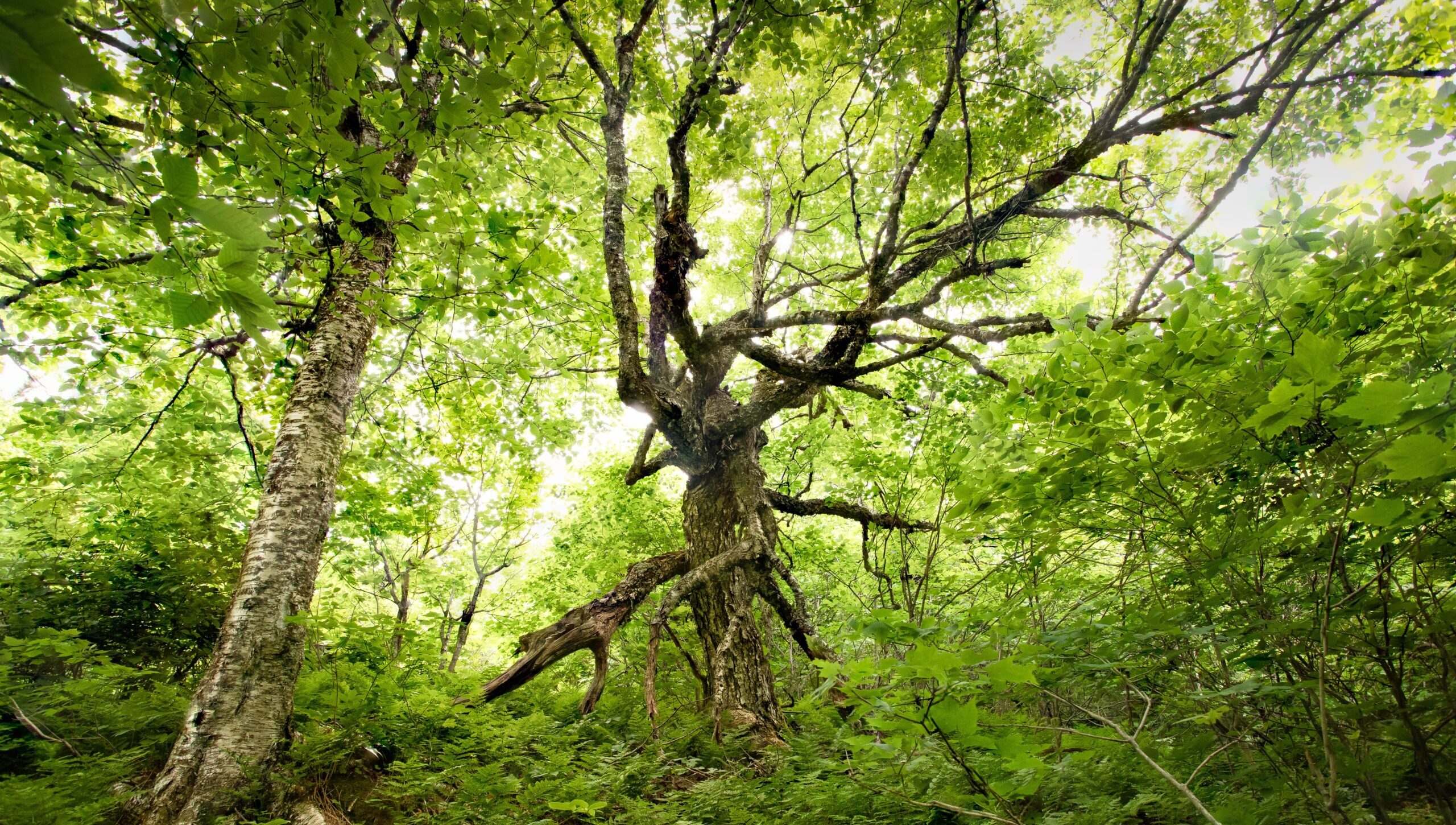Welcome to Voices & Views, a Friends of Mount Sunapee blog dedicated to comments and images that reflect on experiences in nature, land conservation, and environmental stewardship. Voices & Views brings you comments and short takes from FOMS members and non-members, bloggers, newsmakers, and others.
What defines old growth in New Hampshire?
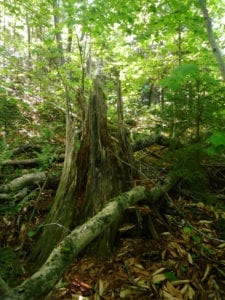
Old trees, large trees, structural diversity, snags, coarse woody debris, pit and mound topography, nurse logs, canopy gaps, broken-topped trees, mosses, lichens, and lack of human disturbance—these are characteristics of an old-growth forest in the Granite State. See "Finding Old-Growth Forests in New Hampshire," an article by David Govatski, published by the University of New Hampshire Cooperative Extension.
As a forester and naturalist, I have had a life-long interest in forests. I have been fortunate to have been able to visit many old-growth forests throughout the United States. I have long recognized the need to preserve these old forests for many reasons. The scientific value of old-growth forests is well known, and several research forests have been created to study the dynamics of these original forests. There are many other reasons to protect old-growth forests, including preserving spiritual, cultural, historical, and biological values.
... People sometimes expect walking in an old-growth forest is like walking in a cathedral of big and tall trees. Sometimes it can feel that way, especially in some of our hemlock and white pine forests. But more often, you will find a chaotic scene of downed trees, areas of thick undergrowth, and trees of varying sizes. Walking off-trail can be difficult. Once a person learns to value old-growth forests, he or she will appreciate the aesthetics of the forest's complexity. - David Govatski, Finding Old-Growth Forests in New Hampshire (via UNH-UC)
When it comes to the protection of old forests, Govatski feels we should aim for 10% of our forest land being old growth.
"In addition to identifying opportunities to protect existing or future old-growth on private land, we should encourage local, state, and federal agencies to identify, designate, and protect such forests on public lands," wrote Govatski. "Ideally, we should have at least one old-growth forest designated in each of our ten counties."
For information about the old forest on Mount Sunapee, see Natural Heritage and Ancient Forests (FOMS).
Rewilding: Bob Leverett on old growth, carbon sequestration, forest recovery
Voices & Views shares an interview with forest expert Bob Leverett via Rewilding. The discussion delves into the complex web of life in old-growth forests, carbon sequestration, and the edge-effects of rewilding areas adjacent to old growth.
Leverett is the co-founder of the Native Tree Society, co-founder and President of Friends of Mohawk Trail State Forest, chairperson for the Massachusetts Department of Conservation and Recreation Forest Reserves Scientific Advisory Committee, the co-author of the American Forests Champion Tree-Measuring Guidelines handbook.
He is also co-author of several books including the Sierra Club Guide to Ancient Forests of the Northeast.
This compelling interest placed him in the center of the early old growth preservation movements, which continue to this day. - Rewilding
Related article: "The push for standing forest protections in US climate policy" (January 19, 2021) via Environmental Health News
Resistance Radio talks old forest ecology and protection
Resistance Radio recently aired an interview with Joan Maloof, an old-growth advocate. During the discussion, Maloof relates personal stories as she teaches about forest ecology, the importance of preserving old forests, and the work of the Old-Growth Forest Network. We share that interview here. And to learn about the rare old forest in Mount Sunapee State Park, see the links below.
"Joan Maloof, Professor Emeritus of biology and environmental studies at Salisbury University, founded the Old-Growth Forest Network to preserve, protect and promote the country's few remaining stands of old-growth forest. She spends her time lecturing, writing, visiting forests, assisting private landowners, and supporting local groups trying to protect community forests from development. She is the author of four books about trees and forests." - Resistance Radio, May 24, 2020
Related links
Sunapee Mountain hike bestows far more than one seeks
I took a walk in the woods and came out taller than the trees.
Henry David Thoreau
Take a walk in nature and smell the wild air.
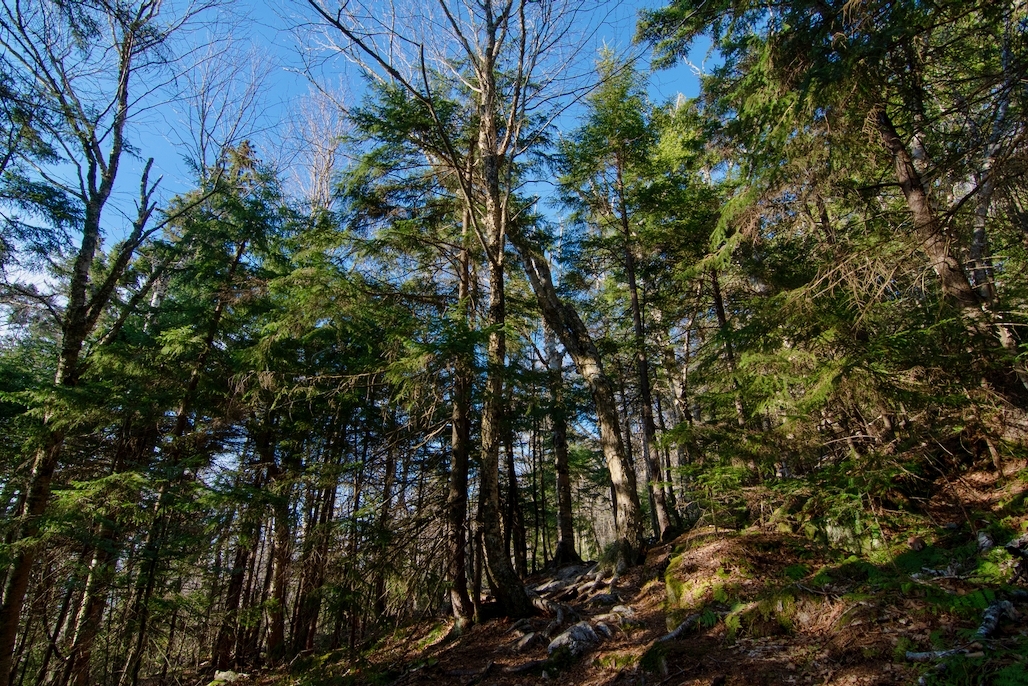
Hiking the Summit Trail along Mount Sunapee's west flank
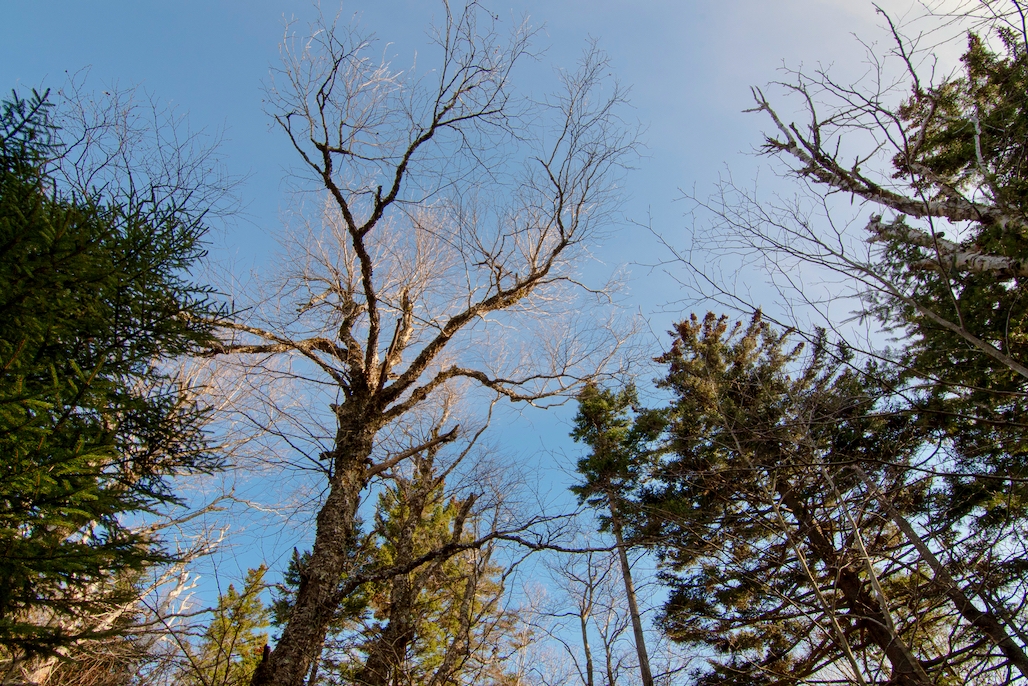
In every walk with nature, one receives far more than one seeks.
John Muir
At Mount Sunapee State Park, the forested hiking trails take you through an exemplary natural community system, which encompasses rare old forest.
Download the most recent Hiking Map published by FOMS: BROCHURE 2023 page 1 and BROCHURE 2023 page 2 (Mount Sunapee State Park's Rare Old Forest and Hiking Map)
As you explore the great outdoors, please stay on the trails and be mindful of trail conditions and others on the trails. Follow hiking guidelines and Leave No Trace practices. Stay safe. Be well.
Friends of Mount Sunapee photos: Mount Sunapee State Park, hiking the Summit Trail (2020).
Further reading and viewing
- Mount Sunapee hiking guide (pdf)
- Everlasting Forests: The Mount Sunapee Story (via YouTube)
- Hiking the Mount Sunapee Summit Trail, courtesy of SooNipi Publications
Old-Growth Forest Network: The Healthiest Forest
Created by the Old-Growth Forest Network, this film "takes you on a 4-minute journey that represents 300 years in the life of a forest. See how structure and biodiversity recover naturally, and how continued management like thinning and harvesting interferes with recovery."
Related news articles
- Death of the giants: forests getting shorter, younger, in Northwest and elsewhere - The Seattle Times (June 5, 2020)
- Study: Climate change, industry harming old-growth forest - The Daily World (June 2, 2020)
- As forests decline globally, New England is not immune via WBUR (May 28, 2020)
OGFN related articles
- Pachama forms new advisory board of environmental experts - Global Newswire (June 10, 2020)
- Teens to advise ODNR youth outreach program - Ohio's Country Journal (May 26, 2020)
- Mohawk Trail State Forest - Old-Growth Forest Network
About the old forest in Mount Sunapee State Park (FOMS resource page)
'Time for a climb' from New Hampshire Garden Solutions
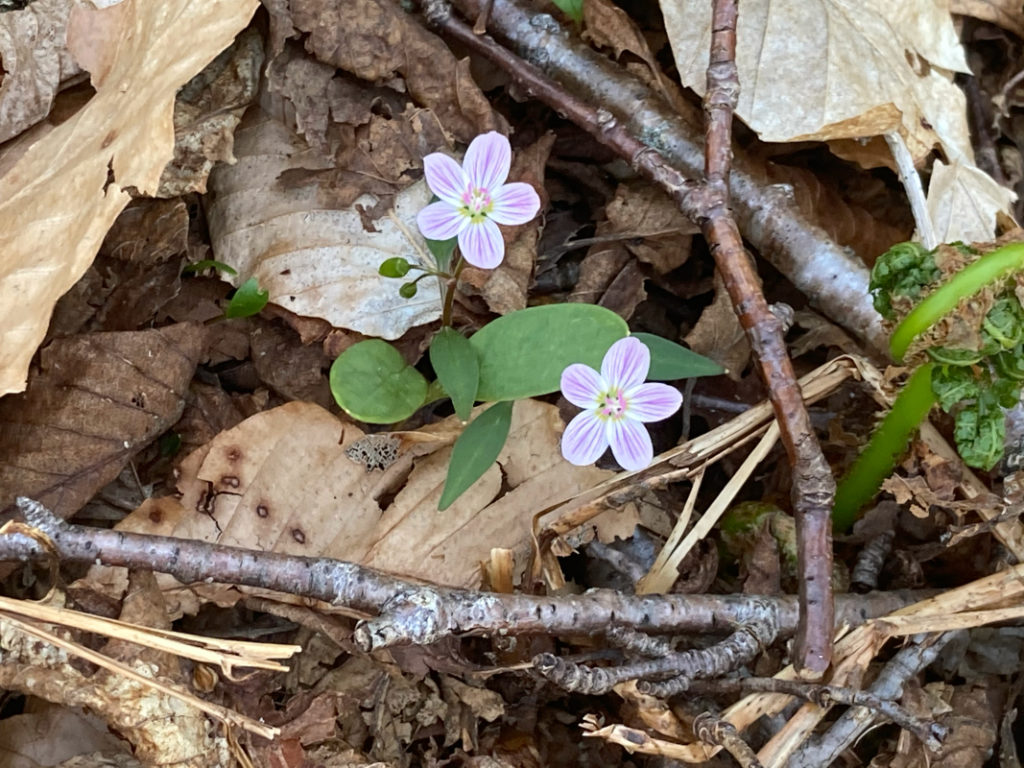
It's Time For a Climb: New Hampshire Garden Solutions takes you along on a recent outing on Pitcher Mountain in Stoddard, N.H., and the discoveries made by taking the same trails again and again.
John Burroughs said “To find new things, take the path you took yesterday” and of course he was right. I thought of him last year when I found spring beauties I had been walking by for years and then I thought of him again on this day, when I found sessile leaved bellwort growing right beside the trail I’ve hiked so many times. I’m always amazed by how much I miss, and that’s why I walk the same trails again and again. It’s the only way to truly know a place.
See New Hampshire Garden Solutions, Exploring Nature in New Hampshire.
The Hobblebush
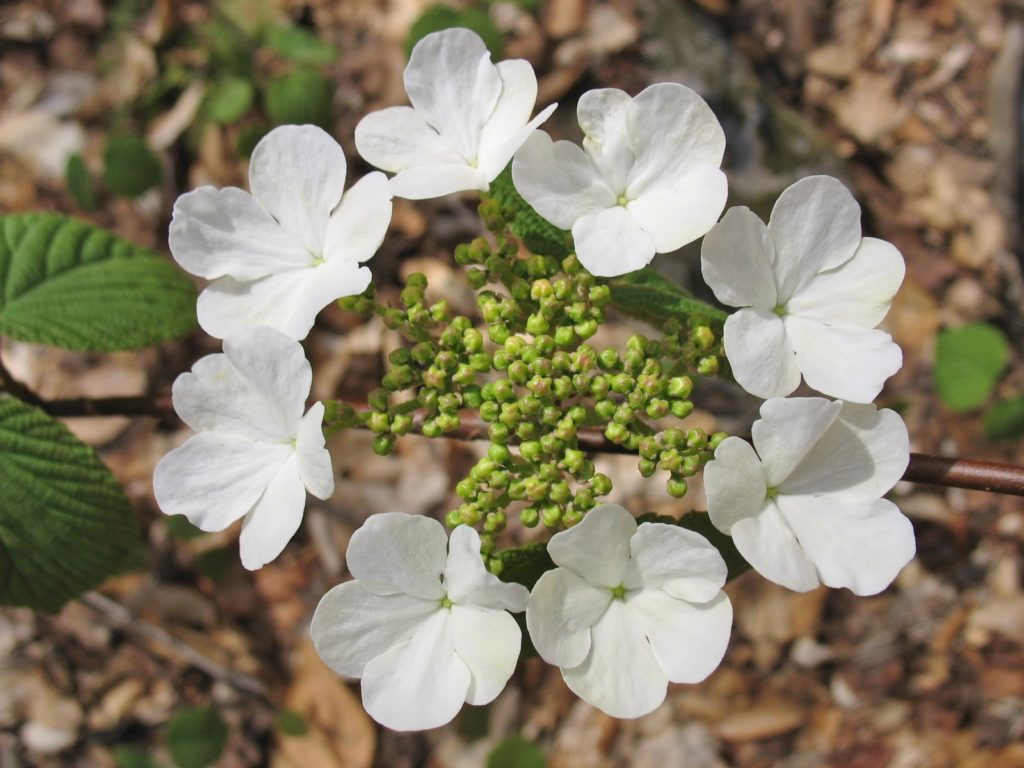
When heading out for a springtime hike or forest walk, be sure to look for the showy flowers of the hobblebush (Viburnum lantanoides). The hobblebush is a shade loving deciduous shrub with sprawling branches, which will root if they touch the ground. The photo above, taken while hiking at Mount Sunapee State Park, shows the flat-topped clusters of white flowers of the hobblebush.
Voices & Views shares The Nature of Phenology, Episode 123, Hobblebush
Large clusters of hobblebush flowers can be found now. Not only do hobblebush flowers trick pollinators into landing on them, but the plants really do trip walking animals and careless hikers more than your average shrub—hence the name hobblebush.
And via Northernwoodlands.org, enjoy The Humble (yet Devilish) Hobblebush and Hobblebush, Viburnum lantanoides
Online references
Gale Straub: 'She Explores - Women in the Outdoors'
"Enjoy. I find inspiration and comfort by connecting with women who share their outdoor experiences and stories." A Friends of Mount Sunapee volunteer organizer shares She Explores, the podcast by Gail Straub of Dover. N.H.
Recent bird sightings
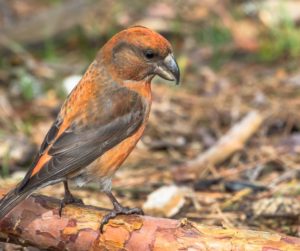
Voices & Views, bird sightings in the Sunapee region: The NH Audubon Rare Bird Alert for May 4, 2020, reported six black scoters and a red-necked grebe seen on Lake Sunapee on May 1. And the Alert for May 11, 2020, listed two red crossbills seen on Mountain Road in Newbury on May 11.
See the Rare Bird Alerts via the NH Birds Google Group for May 4, 2020, and May 11, 2020.
For helpful birding resources, see nhbirdrecords.org/current-sightings/.
During the Coronavirus pandemic, please enjoy your outings while following guidelines for safe travel and social distancing. Stay local. Stay safe. Be healthy.
Share your local sightings and interest in birding. Contact FOMS or email: catherine@friendsofmountsuanpee.org.
(Stock photos of red crossbill and red-necked grebe)
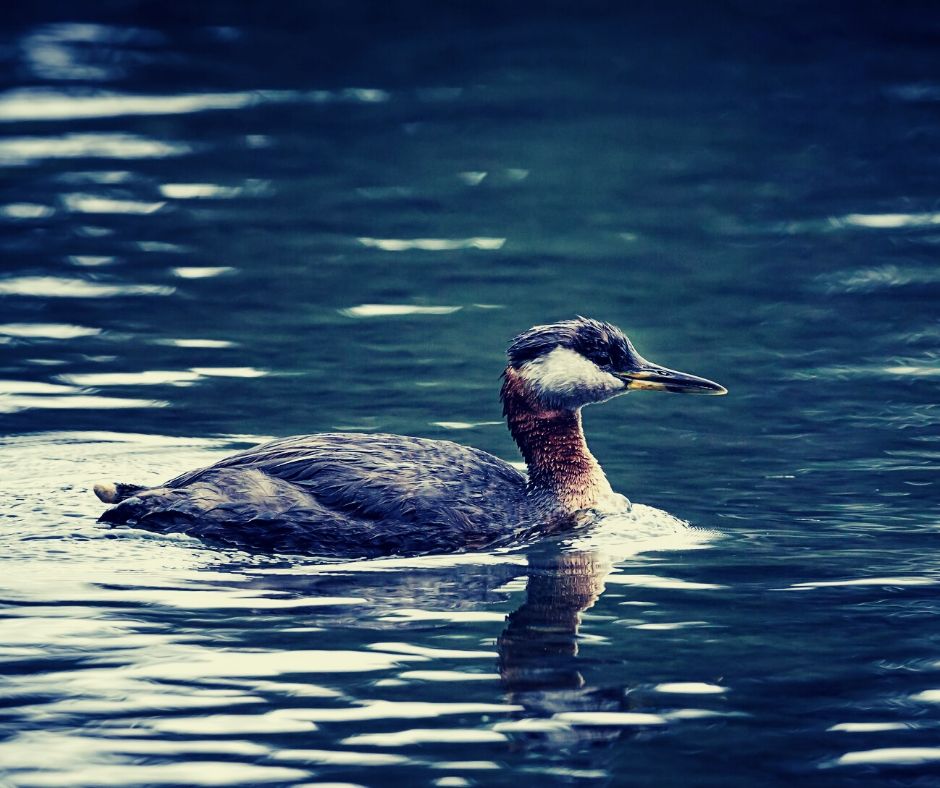
Old-Growth Forest Network founder speaks for forest
Voices & Views shares an inspiring article.
The Esperanza Project interviewed Joan Maloof, founder of the Old-Growth Forest Network: "What she and her small team has already been able to achieve in the six short years since she founded the Old-Growth Forest Network is impressive, and what they have in the works is even more so."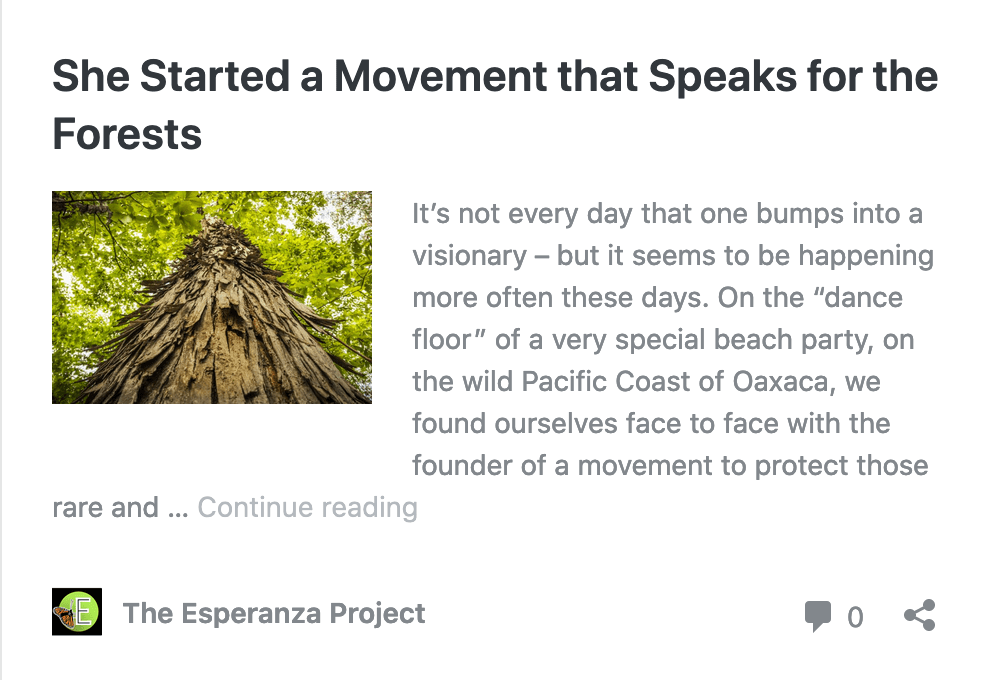
Let the forests speak through you
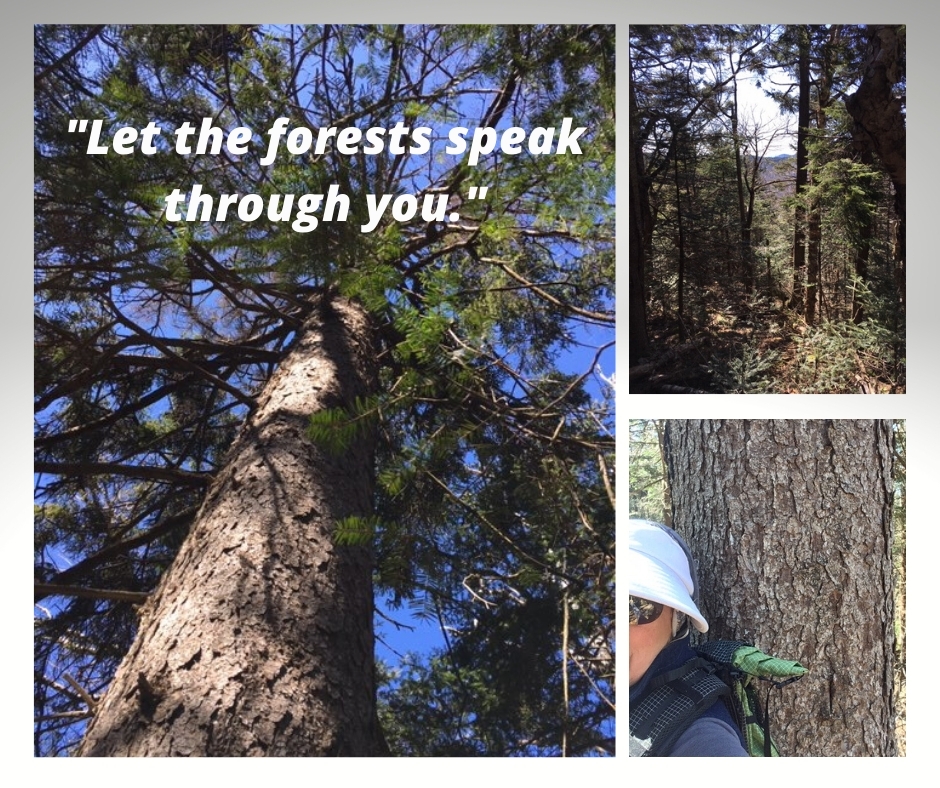 Voices & Views: Let the forests speak through you.
Voices & Views: Let the forests speak through you.
The photos and sentiment are courtesy of a Friends of Mount Sunapee organizer and old forest advocate, who hikes and participates in trail work on Mount Sunapee. Views are from hiking the Summit Trail at Mount Sunapee State Park, late March 2020.
PBS Brief But Spectacular take on environmental literacy and old growth
Check out this Brief But Spectacular take aired on PBS. Naturalist John Bates speaks about the purpose of his work, to foster "environmental literacy" by "connecting time through old-growth forests."
And here is related information about John Bates and old growth, including the exemplary and ancient forest on Mount Sunapee.
- Naturalist John Bates Can Guide You To The Best Old-Growth Forest In Wisconsin (Wisconsin Public Radio, November 1, 2019
- Our Living Ancestors by John Bates (Manitowish River Press)
- Natural Heritage and Ancient Forests (Friends of Mount Sunapee resource page)
- Mount Sunapee State Park’s Rare Old Forest (Friends of Mount Sunapee brochure)

